Menu
AZDye™ 647 Picolyl Azide is an advanced fluorescent probe that incorporates a copper-chelating motif to raise the effective concentration of Cu(I) at the reaction site to boost the efficiency of the CuAAC reaction, resulting in a faster and more biocompatible CuAAC labeling. Up to 40-fold increase of signal intensity, compared to conventional azides, was reported (see Selected References).
In addition, the use picolyl azides instead of conventional azides allows for at least a tenfold reduction in the concentration of the copper catalyst without sacrificing the efficiency of labeling, significantly improving biocompatibility of CuAAC labeling protocol.
In summary, the introduction of a copper-chelating motif into azide probe leads to a substantial increase in the sensitivity and reduced cell toxicity of CuAAC detection alkyne-tagged biomolecules. This will be of special value for the detection of low abundance targets or living system imaging.
AZDye™ 647 Picolyl Azide is a water-soluble, pH-insensitive from pH 4 to pH 10, far-red-fluorescent probe with excitation ideally suited for the 633 nm or 647 nm laser lines. AZDye™ 647 is structurally similar to Alexa Fluor® 647, and spectrally is almost identical to Cy5 Dye, Alexa Fluor® 647, CF® 647 Dye, or any other Cyanine5 based fluorescent dyes.
| Unit Size | 1 mg, 5 mg, 25 mg |
|---|---|
| Abs/Em Maxima | 648/671 nm |
| Extinction Coefficient | 270,000 |
| Flow Cytometry Laser Line | 633 nm or 647 nm |
| Microscopy Laser Line | 633 nm or 647 nm |
| Spectrally Similar Dyes | Alexa Fluor® 647, CF® 647, DyLight® 649 |
| Molecular weight | 1061.21 (protonated) |
| CAS | N/A |
| Solubility | Water, DMSO, DMF |
| Purity | >95% (HPLC) |
| Appearance | Blue solid |
| Storage Conditions | -20°C. Desiccate |
| Shipping Conditions | Ambient temperature |
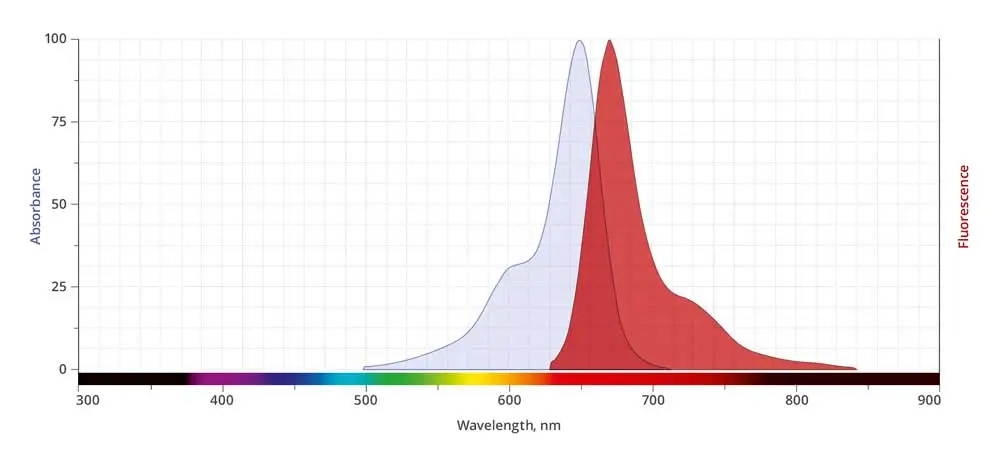
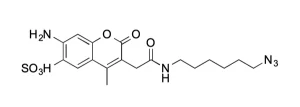
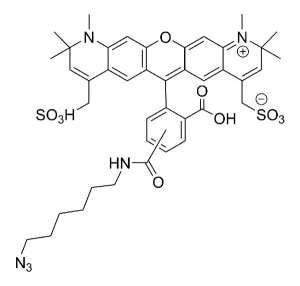
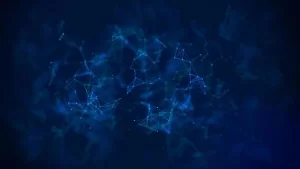
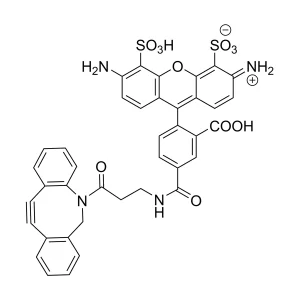
Stay in the Loop
Join Our Online Community
The latest news, tips, and product releases delivered conveniently to your inbox.
We’re social scientists! Let’s connect.
Together we breakthroughTM

©Vector Laboratories, Inc. 2023 All Rights Reserved.
How do I Request a Quote?
To request a quote for products: